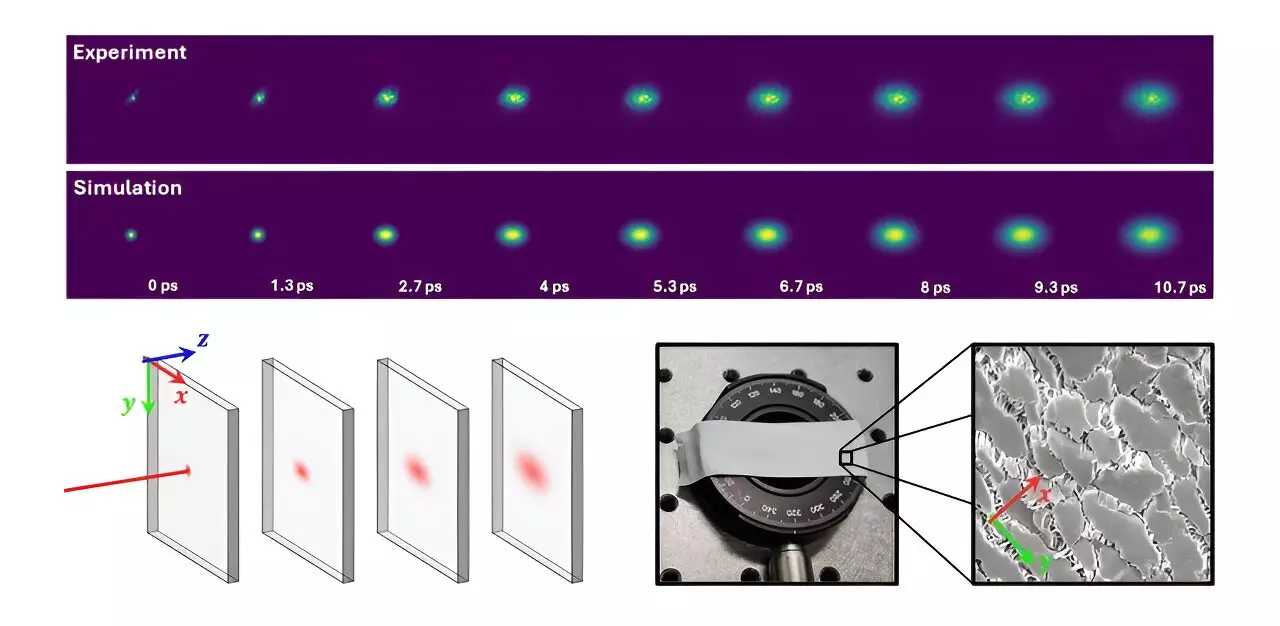

The behavior of light as it travels through different materials is a cornerstone of various scientific and engineering disciplines, including medical imaging, materials science, and manufacturing. Understanding how light interacts with materials—specifically those that exhibit anisotropic properties—has historically posed a significant challenge. Anisotropy refers to the directional dependence of a material’s properties, leading to variations in how light scatters when it encounters these materials. This complexity can complicate the accurate characterization of a material’s optical properties, often leading researchers to oversimplify their models by assuming isotropic behavior, which can yield erroneous results.
Recent advancements in measurement techniques have opened new avenues for exploring these complex interactions. A pioneering study led by a team of researchers from the European Laboratory for Nonlinear Spectroscopy (LENS) represents a major step forward in the field. This research, published in *Advanced Photonics Nexus*, proposes a sophisticated new methodology that combines time-domain transmittance imaging with state-of-the-art Monte Carlo simulations. By employing this unique approach, the team was able to accurately capture the intricacies of light’s behavior in anisotropic materials.
The researchers focused their investigations on two widely used anisotropic substances: Teflon tape and paper. Teflon, renowned for its industrial applications, demonstrates anisotropic light scattering due to its unique molecular arrangement. Similarly, paper features inherent anisotropy resulting from the aligned cellulose fibers that constitute its structure. By employing transient imaging techniques to observe how ultrashort light pulses propagate through these materials, the researchers obtained vital data on the time evolution of light patterns, enabling a comprehensive understanding of scattering behaviors.
The key to the study’s success lay in the innovative method that introduced a concept of “anisotropy awareness” into the simulation process. This allowed the researchers to track the differences in light diffusion across varying directions within Teflon tape and paper with unprecedented precision. For the first time, the full scattering tensor coefficients for these materials were extracted, providing critical insights into how light fundamentally interacts with their structure.
What sets this research apart from previous studies is its emphasis on capturing the directional dependencies of light scattering, rather than relying on an isotropic model that could lead to systematic inaccuracies. As highlighted by Dr. Lorenzo Pattelli, the lead researcher, this approach addresses long-standing gaps in the understanding of transport anisotropy. Historically, neglecting the anisotropic nature of materials has resulted in flawed interpretations of scattering coefficients, potentially affecting findings in diverse fields, from medical diagnostics to advanced manufacturing processes.
The ramifications of this groundbreaking approach extend beyond mere academic interest. For fields that depend on precise optical measurements, such as medical imaging, the newly developed methodology could enhance diagnostic capabilities. Accurate modeling of light scattering in biological tissues could lead to breakthroughs in early disease detection, personalized medicine, and even surgical imaging techniques. Additionally, for industries reliant on material science, these findings lend critical insights for the design and application of novel materials that engage with light in complex ways.
As researchers move forward, the ability to accurately characterize anisotropic materials will undoubtedly inspire further innovations. By applying these techniques to a wider range of materials, scientists can expand their understanding of light-material interactions, paving the way for advancements across various domains. The future lies in embracing complexity rather than simplifying it; as demonstrated by this study, the path to greater accuracy and understanding is through recognizing and studying the inherent anisotropies in the materials around us.
Through such innovative methodologies, we can anticipate a new era in material analysis—one that promises greater precision and application in both scientific and industrial contexts.
A groundbreaking discovery by scientists at the University of Manchester is poised to reshape the…
In an era marked by rapid ecological change, the quest for understanding environmental pollutants like…
The meteoric rise of artificial intelligence (AI) technologies is not without significant implications on our…
The landscape of quantum computing is on the verge of transformative progress, fueled by groundbreaking…
Schizophrenia is not merely a mental health issue; it is a multifaceted condition that wreaks…
Recent scientific research has illuminated the intricate web that ties our dietary choices to the…
This website uses cookies.